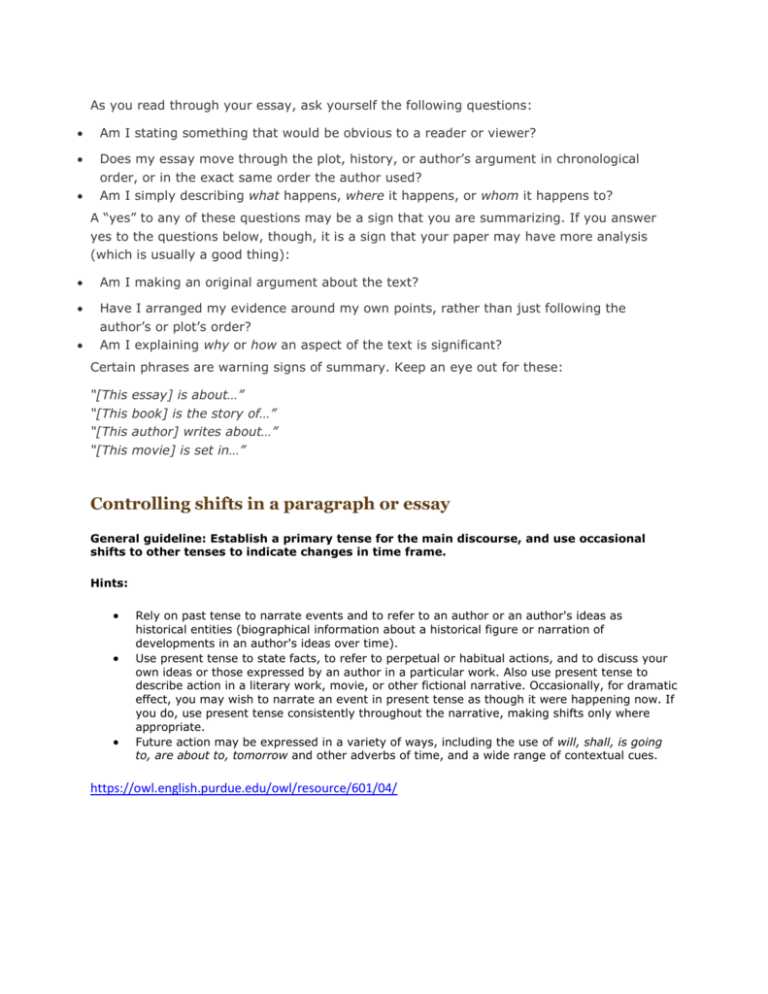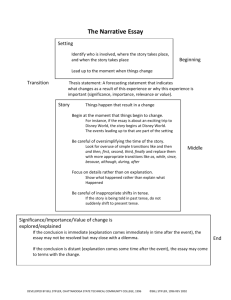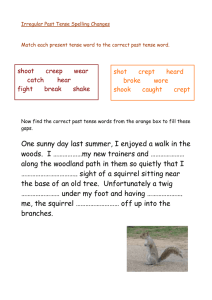Controlling shifts in a paragraph or essay
advertisement

As you read through your essay, ask yourself the following questions: Am I stating something that would be obvious to a reader or viewer? Does my essay move through the plot, history, or author’s argument in chronological order, or in the exact same order the author used? Am I simply describing what happens, where it happens, or whom it happens to? A “yes” to any of these questions may be a sign that you are summarizing. If you answer yes to the questions below, though, it is a sign that your paper may have more analysis (which is usually a good thing): Am I making an original argument about the text? Have I arranged my evidence around my own points, rather than just following the author’s or plot’s order? Am I explaining why or how an aspect of the text is significant? Certain phrases are warning signs of summary. Keep an eye out for these: “[This “[This “[This “[This essay] is about…” book] is the story of…” author] writes about…” movie] is set in…” Controlling shifts in a paragraph or essay General guideline: Establish a primary tense for the main discourse, and use occasional shifts to other tenses to indicate changes in time frame. Hints: Rely on past tense to narrate events and to refer to an author or an author's ideas as historical entities (biographical information about a historical figure or narration of developments in an author's ideas over time). Use present tense to state facts, to refer to perpetual or habitual actions, and to discuss your own ideas or those expressed by an author in a particular work. Also use present tense to describe action in a literary work, movie, or other fictional narrative. Occasionally, for dramatic effect, you may wish to narrate an event in present tense as though it were happening now. If you do, use present tense consistently throughout the narrative, making shifts only where appropriate. Future action may be expressed in a variety of ways, including the use of will, shall, is going to, are about to, tomorrow and other adverbs of time, and a wide range of contextual cues. https://owl.english.purdue.edu/owl/resource/601/04/






